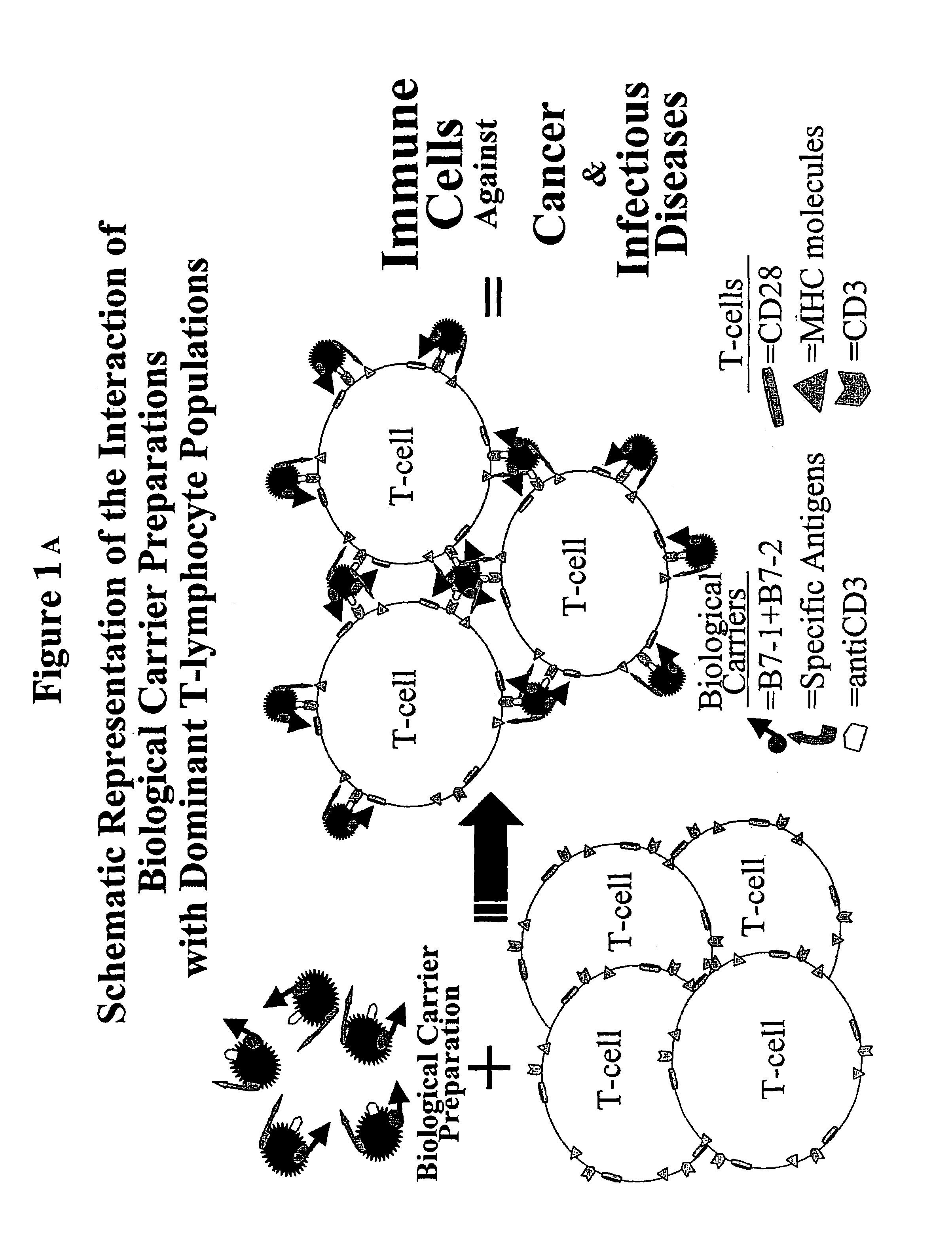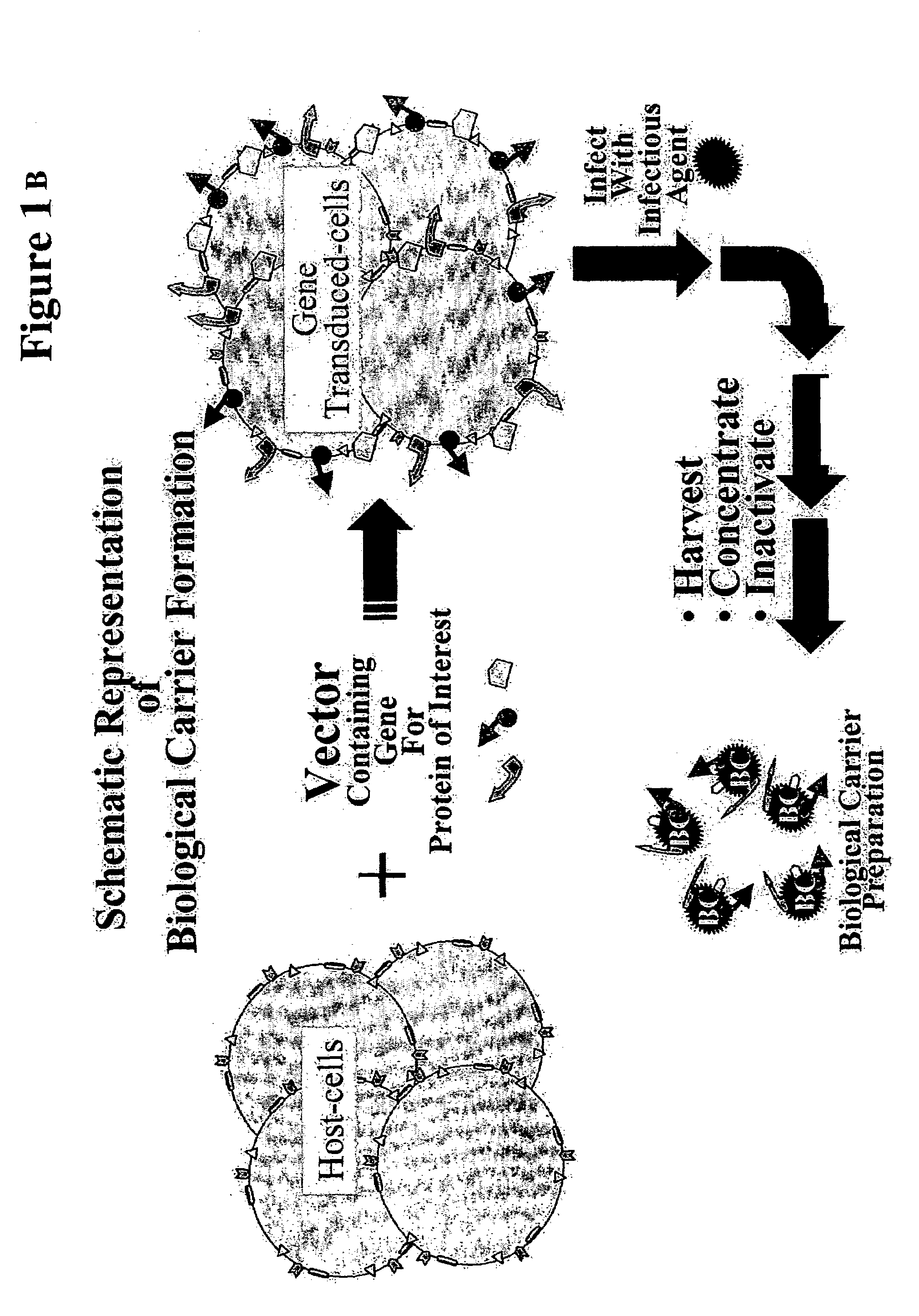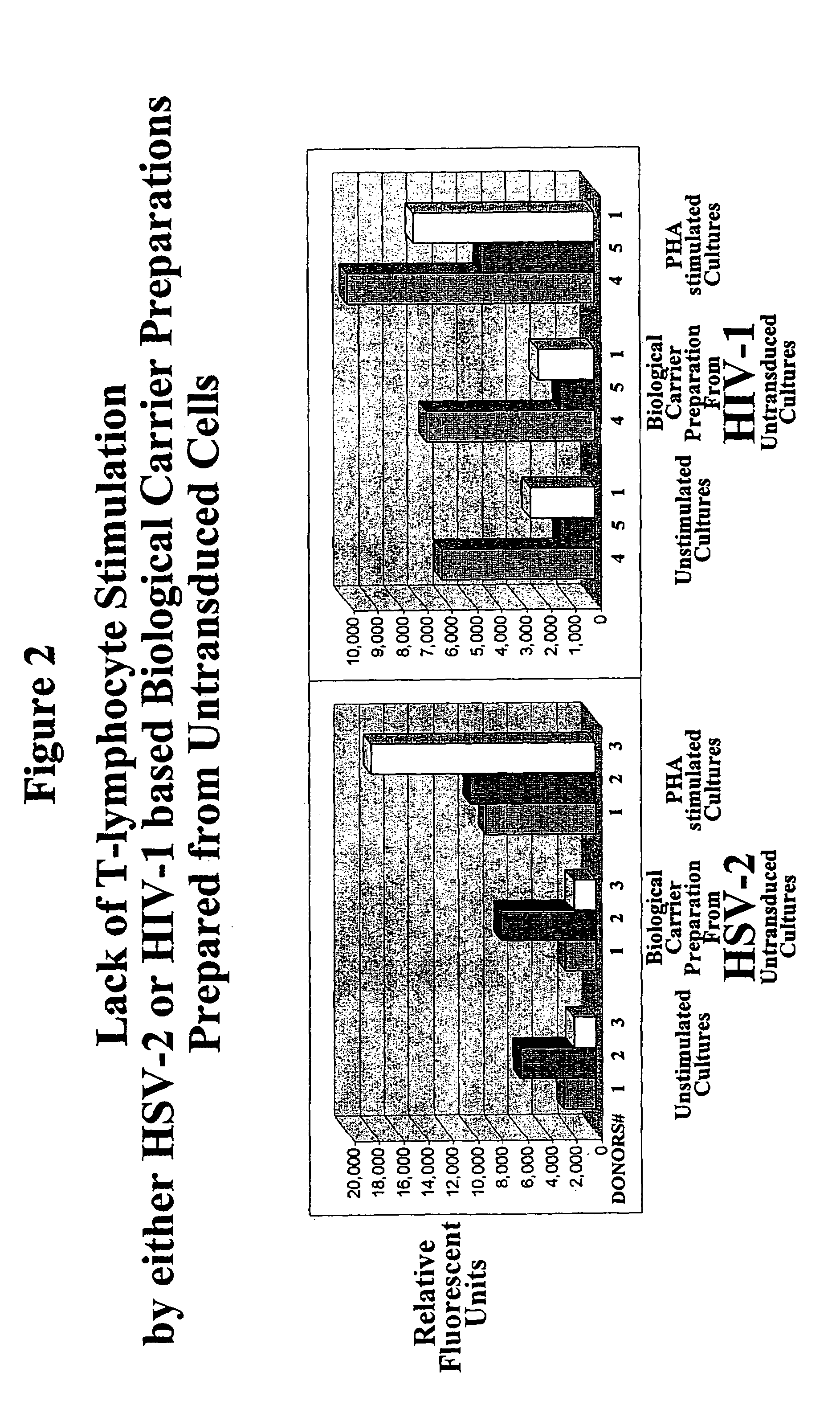Production of "biological carriers" for induction of immune responses and inhibition of viral replication
a technology of immune response and viral replication, applied in the field of antigen presentation, can solve the problems of cumbersome, laborious, time-consuming, and expensive current procedures
- Summary
- Abstract
- Description
- Claims
- Application Information
AI Technical Summary
Benefits of technology
Problems solved by technology
Method used
Image
Examples
example 1
Requirement for Host Cell Modification(S) for Biological Carrier-Dependent Lymphocyte Stimulation
[0037]The principle of this invention is demonstrated by proliferation experiments comparing the degree of stimulation of biological carrier preparations obtained from untransduced, anti-CD3, B7-1+B7-2, and anti-CD3&B7-1+B7-2 transduced cultures.
[0038]Elutriated lymphocytes that were treated for six day with a preparation of biological carriers obtained from untransduced cultures showed a degree of proliferation (lymphocyte stimulation) similar to unstimulated (un-treated) cells (FIG. 2). Proliferation was measured by AlamarBlue™ assay. The assay is designed to measure quantitatively the proliferation of human cells by the incorporation of an oxidation-reduction indicator that fluoresces in response to chemical reduction of growth medium resulting from cell growth. The lack of biological carrier dependent stimulation when biological carriers were prepared from untransduced cultures was i...
example 2
Biological Carrier Preparations Retain Their Biological Activity After Lyophilization and Storage at Room Temperature
[0039]The principle of this invention is further demonstrated by retention of cellular proliferating biological activity when biological carrier preparations were lyophilized and stored at ambient temperatures.
[0040]The ability of native harvested culture fluid from HSV-2 based biological carriers from anti-CD3, B7-1+B7-2, and anti-CD3&B7-1+B7-2 transduced cells were compared to aliquots of the same sample fluids after lyophilization with respect to the ability of the preparations to stimulate T-lymphocytes in culture. In addition to lyophilization, the lyophilized material was stored at room temperature for two weeks before testing biological activity. After thirteen days in culture with Donor #6 T-lymphocytes (Table 1), the lyophilized culture supernatant from the transduced host cells showed similar stimulation of proliferation to that observed with the native cult...
example 3
Biological Carrier Preparations Retain Their Biological Activity After Concentration
[0043]The principle of this invention is further demonstrated by retention of cellular proliferating biological activity when biological carrier preparations were concentrated.
[0044]The ability to stimulate T-lymphocytes with native harvested culture fluid from HSV-2 based biological carriers obtained from untransduced or anti-CD3&B7-1+B7-2 transduced cells were compared to the same supernatants concentrated by polyethylene glycol (PEG) precipitation. The addition of PEG to culture fluid results in the formation of a precipitate. Virus (HSV-2) infected harvested culture supernatants were centrifuged at 4,000 times the force of gravity for 10 minutes, removing large particulate material from the culture fluid. Polyethylene glycol was added to the clarified supernatant to 6% and after 4 to 16 hours of incubation at 4° C. a precipitate was collected by centrifugation. Following resuspension of the pelle...
PUM
| Property | Measurement | Unit |
|---|---|---|
| volumes | aaaaa | aaaaa |
| volumes | aaaaa | aaaaa |
| time | aaaaa | aaaaa |
Abstract
Description
Claims
Application Information
 Login to View More
Login to View More - R&D
- Intellectual Property
- Life Sciences
- Materials
- Tech Scout
- Unparalleled Data Quality
- Higher Quality Content
- 60% Fewer Hallucinations
Browse by: Latest US Patents, China's latest patents, Technical Efficacy Thesaurus, Application Domain, Technology Topic, Popular Technical Reports.
© 2025 PatSnap. All rights reserved.Legal|Privacy policy|Modern Slavery Act Transparency Statement|Sitemap|About US| Contact US: help@patsnap.com



